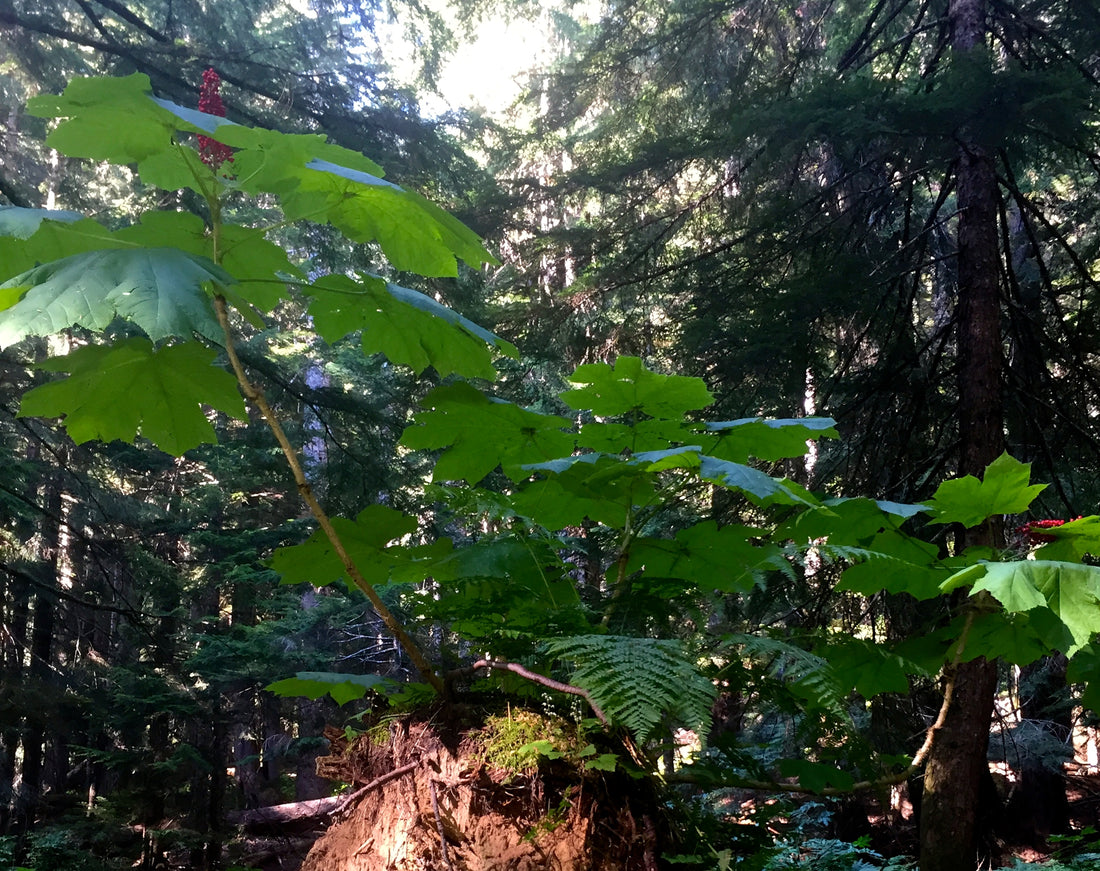
Devil's club: the Northwest's Adaptogen
Share
Devil’s club is a familiar sight in our local woods, and a plant many hikers (or bush-whackers) know only as a nasty plant they may have grabbed once on accident. Covered in spines, this plant is like our “native ginseng”. Large leaves that are reminiscent of our big-leaf maple sit like umbrellas on top of thin, spiny stems that grow from 3-10 feet tall. The root bark is used, harvested by very carefully and respectfully entering a family of these spreading stems covered in thorns, and cutting a chunk of root between two plants. This does not kill the plant. The bark is then stripped and cut up to make medicine. Devil’s club has been used as a medicine for a long time, as the indigenous people all through the Pacific Northwest were well-acquainted with it.
The root bark acts as a safe and effective respiratory stimulant and expectorant, helping to break up and dispel mucus from the lungs. It also seems to act as an herbal adaptogen, helping to support and protect the body from the potentially detrimental effects of long-term stress by strengthening the immune system and adrenal glands and balancing blood sugar, even perhaps helping with sugar cravings.
Energetically, this herbs seems to have a strong protective and strengthening ability, helping people to have better boundaries when that is needed.
